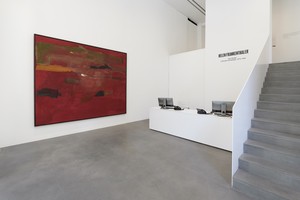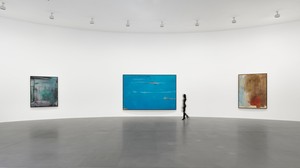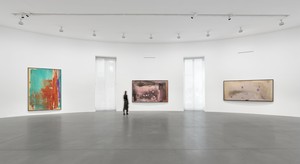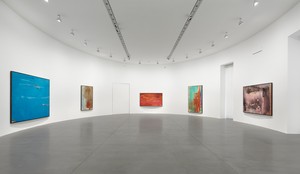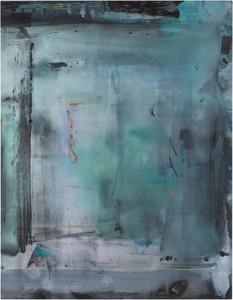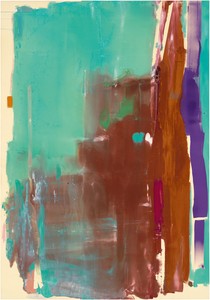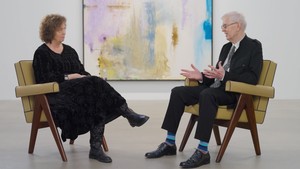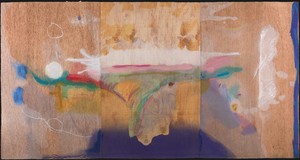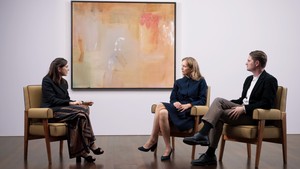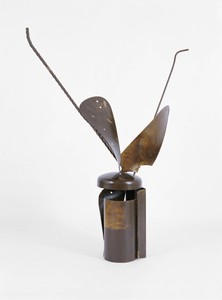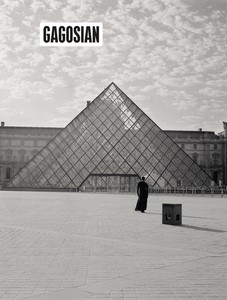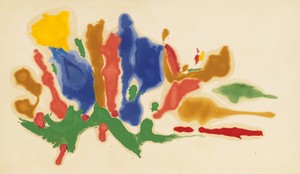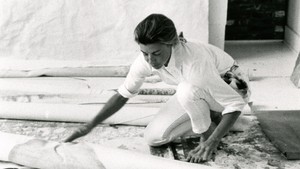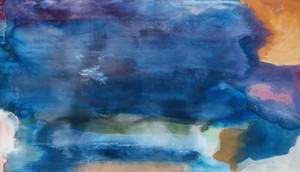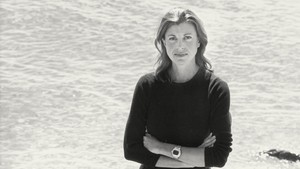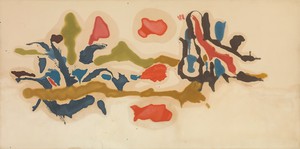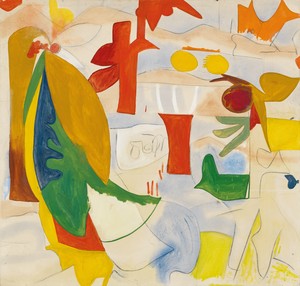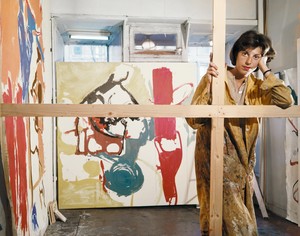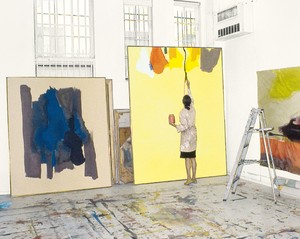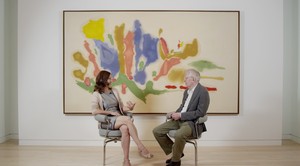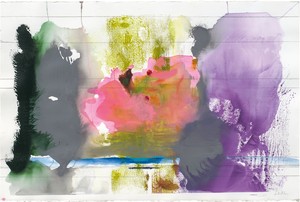Draw in and on the entire surface of it, color it in part, and make it a kind of sea.
—Helen Frankenthaler
Gagosian is pleased to present an exhibition of paintings by Helen Frankenthaler in Rome, coinciding with an exhibition of her work at the Museo di Palazzo Grimani, Venice, on the occasion of the 58th Venice Biennale.
In the summer of 1974, Frankenthaler rented a house at Shippan Point in Stamford, Connecticut, facing the waters of Long Island Sound, marking the beginning of an important period of change for her work. Sea Change comprises eleven canvases that Frankenthaler painted between 1974 and 1983, which reflect her responses to the changing appearance of the wide vistas and moving tides.
One of the earliest canvases, Ocean Drive West #1 (1974), is explicitly oceanic with its floating horizontal bands, seeming to recede across an expanse of transparent blue. In Jupiter (1976) and Reflection (1977), the bands are clustered together and turned to the vertical, appearing to all but dissolve. In both of these paintings, the warm earth colors of the bands contrast with a cool, aqueous blue-green, evoking the meeting of land and water. The large, wide canvases, Tunis II and Dream Walk Red (both 1978), emanate warmth, with densely layered dark red, rose, crimson, sienna, and scarlet. In this period, Frankenthaler talked about “doing more to each picture,” to create something at once more complex and complete.

